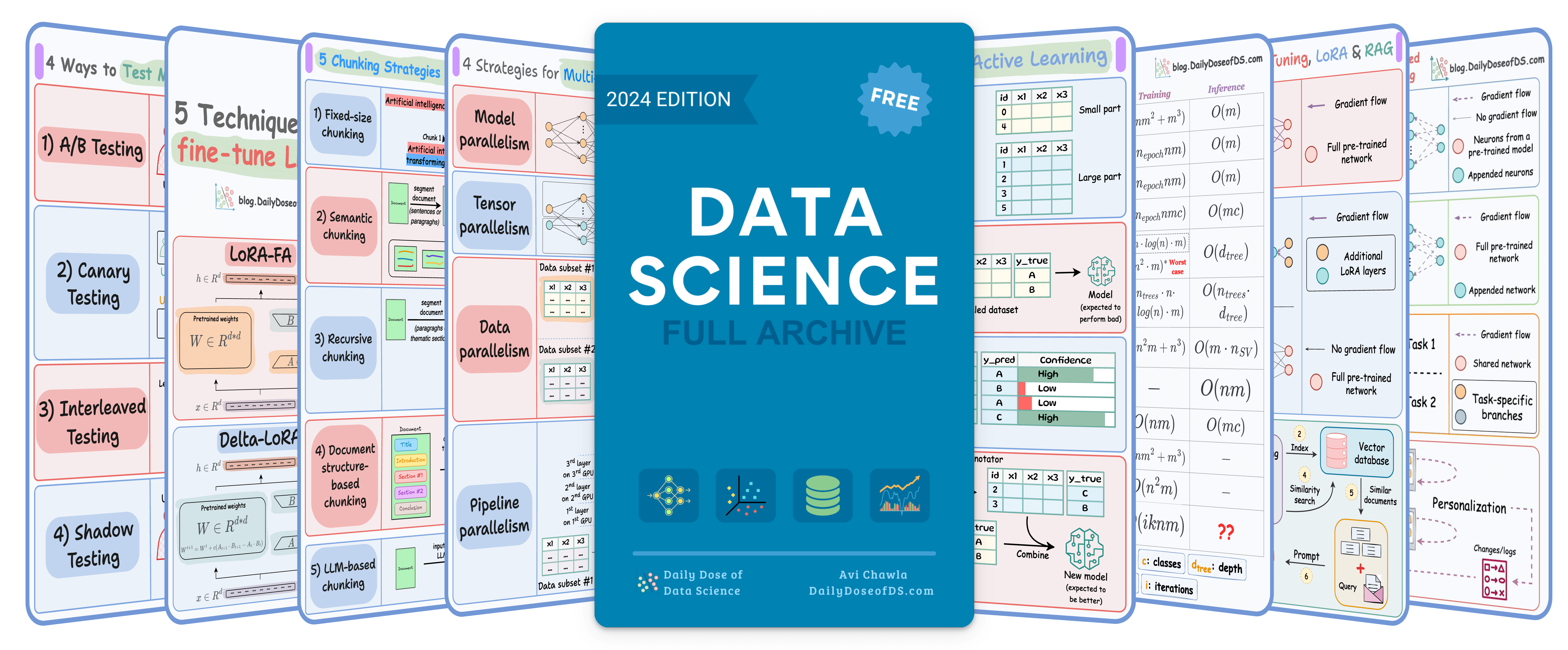

TODAY'S ISSUE
hands-on
Make RAG systems 32x memory efficient!
There’s a simple technique that’s commonly used in the industry that makes RAG ~32x memory efficient!
- Perplexity uses it in its search index
- Azure uses it in its search pipeline
- HubSpot uses it in its AI assistant
To learn this, we’ll build a RAG system that queries 36M+ vectors in <30ms.
And the technique that will power it is called Binary Quantization.
Tech stack:
- Llama Index for orchestration (open-source).
- Milvus as the vector DB (open-source).
- Beam Cloud for serverless deployment (open-source).
- Kimi-K2 as the LLM hosted on Groq (hosted).
Here's the workflow:
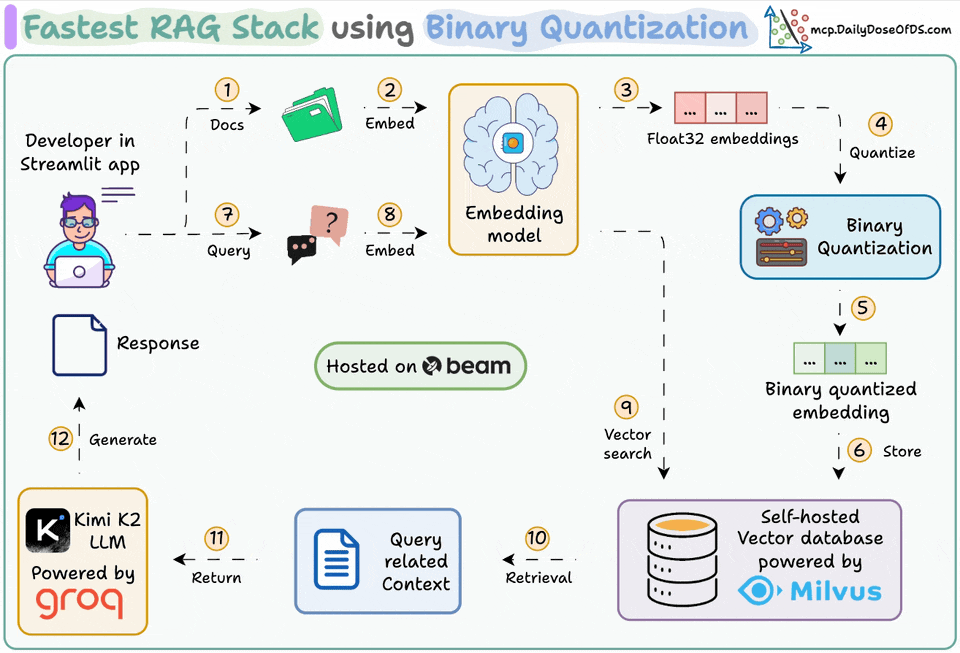
- Ingest documents and generate binary embeddings.
- Create a binary vector index and store embeddings in the vector DB.
- Retrieve top-k similar documents to the user's query.
- LLM generates a response based on additional context.
Let's build it!
Setup Groq
Before we begin, store your Groq API key in a .env file and load it into your environment to leverage the world's fastest AI inference.
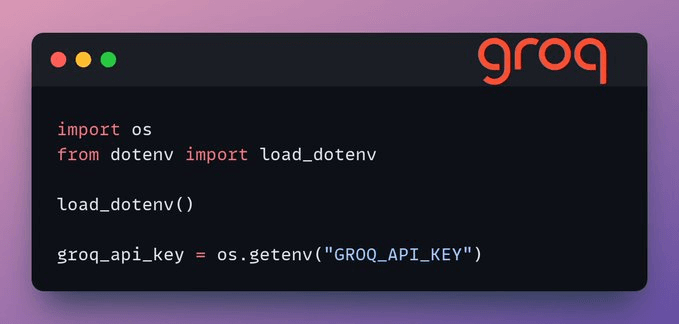
Load data
We ingest our documents using LlamaIndex's directory reader tool.
It can read various data formats including Markdown, PDFs, Word documents, PowerPoint decks, images, audio, and video.
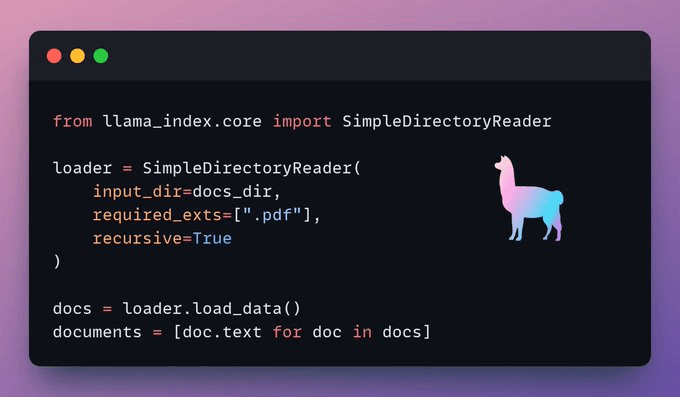
Generate Binary Embeddings
Next, we generate text embeddings (in float32) and convert them to binary vectors, resulting in a 32x reduction in memory and storage.
This is called binary quantization.
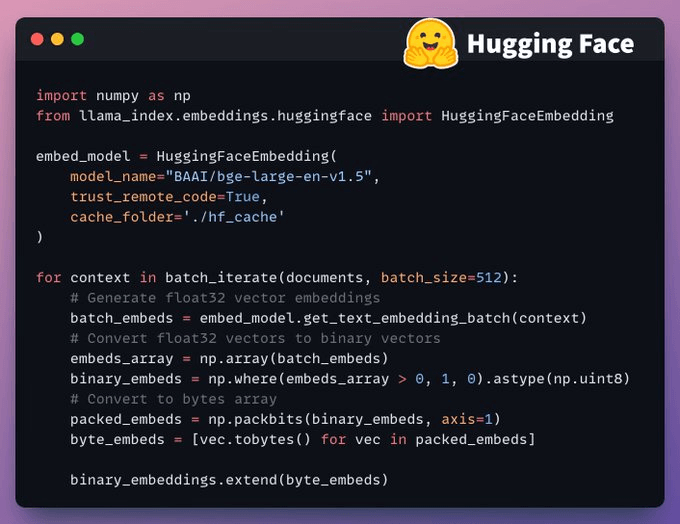
Vector indexing
After our binary quantization is done, we store and index the vectors in a Milvus vector database for efficient retrieval.
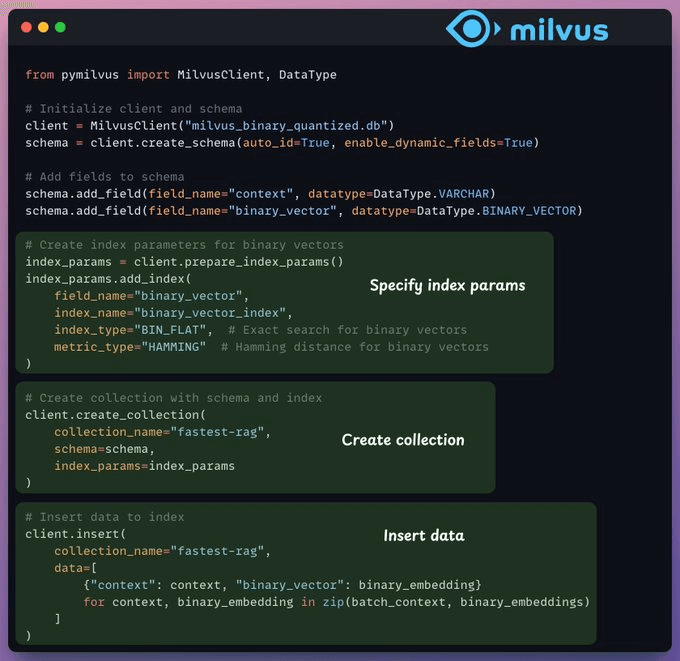
Indexes are specialized data structures that help optimize the performance of data retrieval operations.
Retrieval
In the retrieval stage, we:
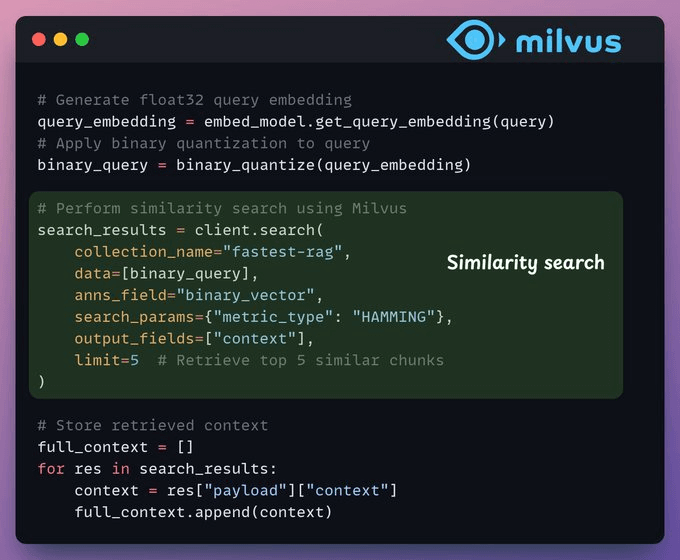
- Embed the user query and apply binary quantization to it.
- Use Hamming distance as the search metric to compare binary vectors.
- Retrieve the top 5 most similar chunks.
- Add the retrieved chunks to the context.
Generation
Finally, we build a generation pipeline using the Kimi-K2 instruct model, served on the fastest AI inference by Groq.
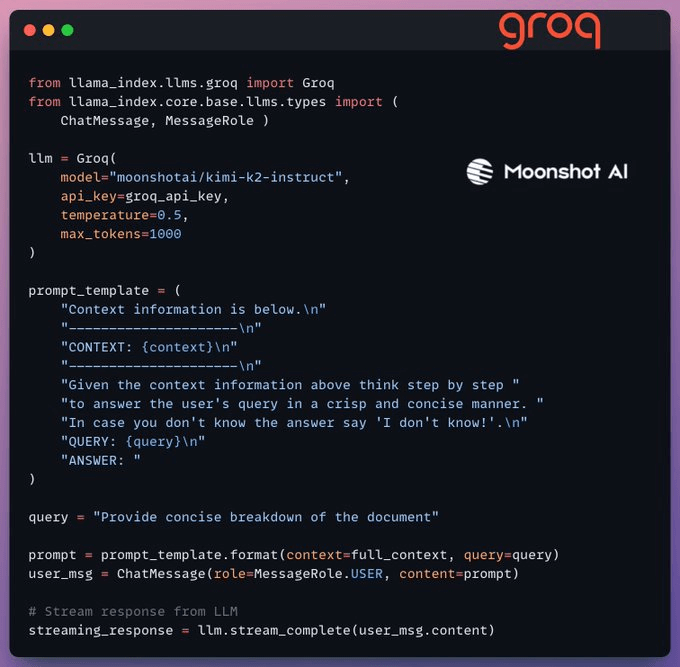
We specify both the query and the retrieved context in a prompt template and pass it to the LLM.
Deployment with Beam
Beam provides ultra-fast serverless deployment of any AI workflow. It is fully open-source, and you can self-host it on your premises (GitHub repo).
Thus, we wrap our app in a Streamlit interface, specify the Python libraries, and the compute specifications for the container.
Finally, we deploy the app in a few lines of code
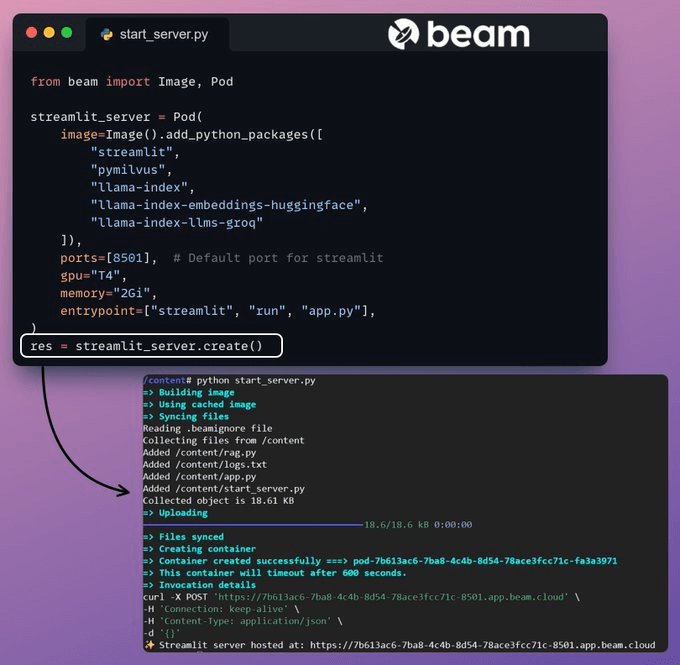
Run the app
Beam launches the container and deploys our streamlit app as an HTTPS server that can be easily accessed from a web browser.
Moving on, to truly assess the scale and inference speed, we test the deployed setup over the PubMed dataset (36M+ vectors).
Our app:
- queried 36M+ vectors in <30ms.
- generated a response in <1s.
Done!
We just built the fastest RAG stack leveraging BQ for efficient retrieval and using ultra-fast serverless deployment of our AI workflow.
machine learning
Test-time data augmentation
Data augmentation strategies are typically used during training time. The idea is to use clever techniques to create more data from existing data:

One example is an image classifier where rotating/flipping images will most likely not alter the true label.
While this is train-time augmentation (TTA), but there’s also test-time augmentation, where we apply data augmentation during testing.
More specifically, instead of showing just one test example to the model, we show multiple versions of the test example by applying different operations.

The model makes probability predictions for every version of the test example, which are then averaged/voted to generate the final prediction:

This way, it creates an ensemble of predictions by considering multiple augmented versions of the input, which leads to a more robust final prediction.
It has also been proved that the average model error with TTA never exceeds the average error of the original model, which is great.
The only catch is that it increases the inference time.
- Data augmentation takes some time.
- Generating multiple predictions increases the overall prediction run-time.
So, when a low inference time is important to you, think twice about TTA.
To summarize, if you can compromise a bit on inference time, TTA can be a powerful way to improve predictions from an existing model without having to engineer a better model.
We covered 11 powerful techniques to supercharge ML models here →
THAT'S A WRAP
No-Fluff Industry ML resources to
Succeed in DS/ML roles

At the end of the day, all businesses care about impact. That’s it!
- Can you reduce costs?
- Drive revenue?
- Can you scale ML models?
- Predict trends before they happen?
We have discussed several other topics (with implementations) in the past that align with such topics.
Here are some of them:
- Learn sophisticated graph architectures and how to train them on graph data in this crash course.
- So many real-world NLP systems rely on pairwise context scoring. Learn scalable approaches here.
- Run large models on small devices using Quantization techniques.
- Learn how to generate prediction intervals or sets with strong statistical guarantees for increasing trust using Conformal Predictions.
- Learn how to identify causal relationships and answer business questions using causal inference in this crash course.
- Learn how to scale and implement ML model training in this practical guide.
- Learn 5 techniques with implementation to reliably test ML models in production.
- Learn how to build and implement privacy-first ML systems using Federated Learning.
- Learn 6 techniques with implementation to compress ML models.
All these resources will help you cultivate key skills that businesses and companies care about the most.
SPONSOR US
Advertise to 600k+ data professionals
Our newsletter puts your products and services directly in front of an audience that matters — thousands of leaders, senior data scientists, machine learning engineers, data analysts, etc., around the world.






